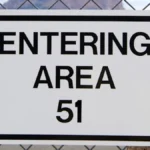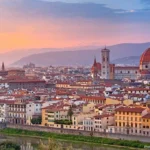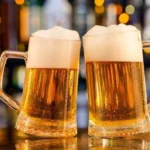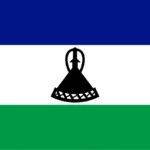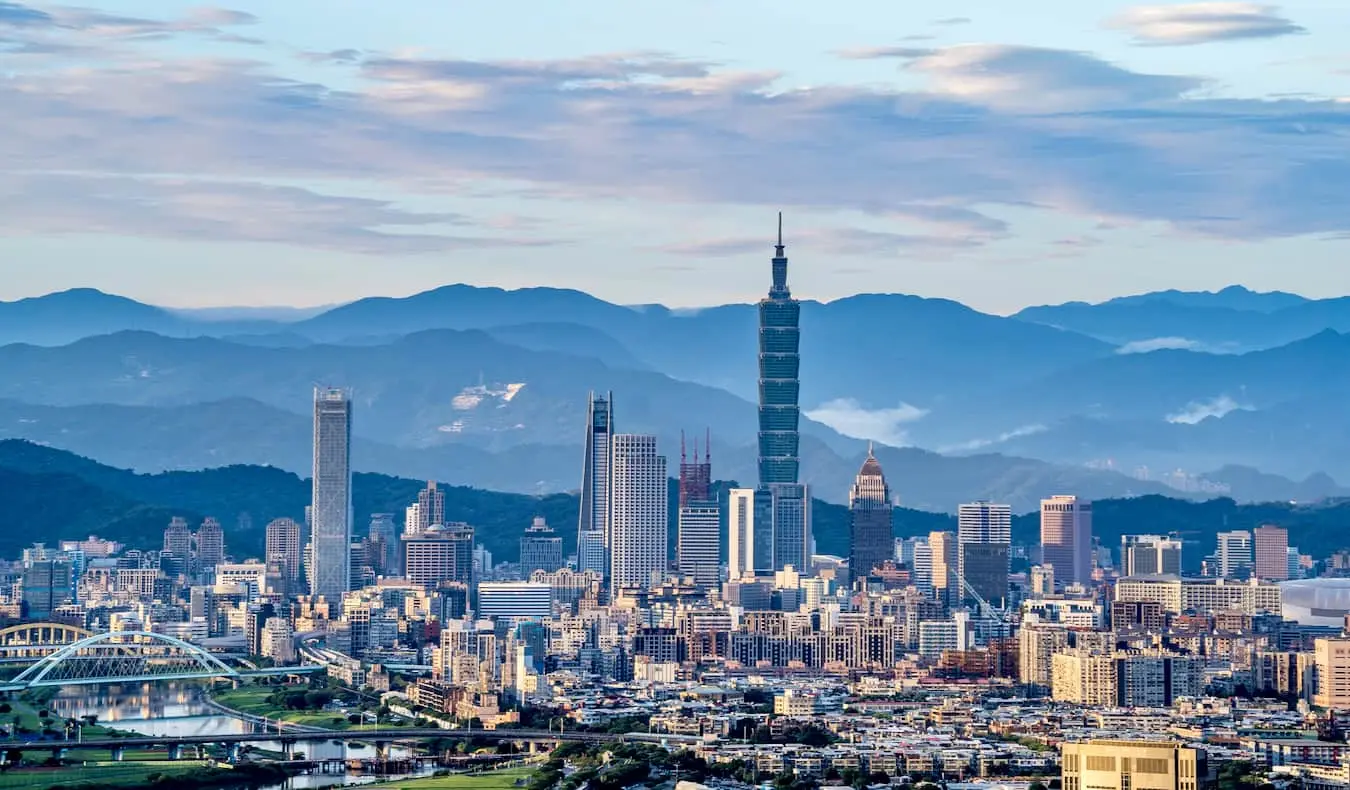
Taipei, the vibrant capital city of Taiwan, is a melting pot of rich cultural heritage, modern innovation, and natural beauty. From towering skyscrapers to serene parks, bustling night markets to tranquil hot springs, Taipei offers a captivating blend of experiences that appeal to visitors from around the world. In this exploration of Taipei, we’ll delve into 25 fascinating facts that showcase the city’s unique charm, from its iconic landmarks to its cultural traditions and everything in between. Join us on a journey through the heart of Taipei, where every corner reveals a new facet of this dynamic metropolis.
Sky High: Taipei 101 held the title of the world’s tallest building from 2004 to 2010, reaching a staggering 508 meters (1,667 ft) in height. Designed by renowned architect C.Y. Lee, this iconic skyscraper stands as a symbol of Taiwan’s economic prowess and technological innovation. Its distinctive design, inspired by traditional Chinese pagodas and bamboo, incorporates advanced engineering features to withstand earthquakes and typhoons common in the region. Taipei 101’s observation decks offer breathtaking views of the cityscape, while its shopping mall houses luxury boutiques and restaurants, making it a must-visit destination for tourists and locals alike.
Night Market Mania: Taipei boasts over 70 night markets, offering a dazzling array of street food, local crafts, and unique experiences. Among these, Shilin Night Market stands out as the largest and most popular, attracting over 2 million visitors monthly. Founded in 1899, Shilin Night Market has evolved into a bustling hub of activity, where vendors peddle everything from stinky tofu to trendy fashion items. Its vibrant atmosphere, filled with the aroma of sizzling snacks and the sounds of bargaining, immerses visitors in Taipei’s vibrant street culture.
Hot Spring Haven: Taipei sits on a geothermal zone, with Beitou District housing over 60 hot springs. These natural thermal baths have been cherished by locals for centuries for their purported health benefits and relaxation properties. The Beitou Hot Springs Museum, housed in a historic Japanese-era building, offers insights into the area’s rich thermal spring culture and its transformation into a modern leisure destination. From public baths to luxurious private resorts, Beitou’s hot spring offerings cater to every preference, inviting visitors to unwind in soothing mineral-rich waters amid serene natural surroundings.
Coffee Capital: Taipei holds the Guinness World Record for the most cafes per capita in a city (2010). With over 2,000 coffee shops crammed into the city, it’s a haven for caffeine lovers. From cozy independent cafes to international chains, Taipei’s coffee scene is as diverse as it is thriving. Coffee aficionados can explore specialty roasters, trendy third-wave establishments, and quaint neighborhood joints, each offering its own unique ambiance and brews. Whether sipping a traditional espresso or indulging in a meticulously crafted pour-over, Taipei’s coffee culture invites visitors to savor every sip in style.
Ancient Giant: The camphor tree in Daan Park is a revered landmark, estimated to be over 1,000 years old. Standing 23 meters (75 ft) tall, it’s considered a sacred guardian of the city. This majestic tree, known locally as the “Daan Forest Park Big Tree,” has witnessed centuries of Taipei’s history unfold, from its humble beginnings as a Qing Dynasty-era hunting ground to its transformation into a beloved urban oasis. Surrounded by lush greenery and serene walking paths, the camphor tree serves as a tranquil retreat for locals seeking respite from the bustling city streets.
Tiny Treasure: The Miniatures Museum of Taiwan houses the world’s smallest functioning violin, measuring just 1 centimeter (0.39 in) long. This remarkable feat of craftsmanship is a testament to the museum’s dedication to preserving and showcasing miniature artistry from around the world. Founded in 1997, the museum boasts an extensive collection of intricately crafted miniatures, including dollhouses, figurines, and dioramas. Visitors can marvel at the meticulous details and precision of these tiny masterpieces, gaining a newfound appreciation for the art of miniaturization.
Cycling City: Over 80 kilometers (50 miles) of dedicated bike paths weave through Taipei, making it a cyclist’s paradise. You can even rent eco-friendly YouBike bicycles at over 400 stations. Taipei’s commitment to promoting cycling as a sustainable and healthy mode of transportation has earned it recognition as one of the most bike-friendly cities in Asia. The city’s extensive network of bike lanes, scenic riverside trails, and bike-sharing programs makes it easy for residents and tourists alike to explore Taipei on two wheels. From leisurely rides along tree-lined boulevards to exhilarating mountain biking adventures in the surrounding hills, Taipei offers endless opportunities for cyclists of all skill levels to pedal their way through urban and natural landscapes alike.
MRT Marvel: The Taipei Metro is one of the most extensive and efficient rapid transit systems in the world. It boasts 6 lines, 131 stations, and carries over 2 million passengers daily. Since its inauguration in 1996, the Taipei Metro has revolutionized public transportation in the city, providing commuters with a fast, reliable, and environmentally friendly way to navigate Taipei’s bustling streets. With trains arriving at intervals of just a few minutes and comprehensive coverage of key destinations, the MRT has become the backbone of Taipei’s transportation network, connecting neighborhoods, business districts, and cultural landmarks with ease.
Temple Trove: Taipei is home to over 200 temples, reflecting the city’s rich religious tapestry. The spectacular Dalongdong Baoan Temple, built in 1738, is a must-see. Nestled amidst the modern skyscrapers and bustling streets of Taipei’s Datong District, the Dalongdong Baoan Temple stands as a testament to Taiwan’s multicultural heritage and spiritual traditions. Dedicated to the Taoist deity Baosheng Dadi, the temple is renowned for its intricate architectural details, vibrant decorative elements, and ornate woodcarvings. Visitors can explore its hallowed halls, participate in traditional rituals, and marvel at the intricate craftsmanship that has endured for centuries.
Green Giant: Taipei’s Yangmingshan National Park is a volcanic mountain range offering stunning natural beauty. The park covers an area of 11,219 hectares (27,722 acres) and boasts a diverse range of flora and fauna. Just a short drive from the bustling streets of downtown Taipei, Yangmingshan National Park beckons nature lovers with its lush forests, scenic hiking trails, and geothermal wonders. From the iconic volcanic peak of Mount Qixing to the tranquil shores of Lengshuikeng Lake, the park’s pristine landscapes provide a tranquil escape from the urban hustle and bustle. Visitors can soak in natural hot springs, marvel at seasonal blooms of cherry blossoms and azaleas, and enjoy panoramic views of Taipei’s skyline against the backdrop of verdant mountains.
Record-Breaking Puppetry: The National Palace Museum in Taipei houses the largest collection of Chinese imperial artifacts in the world, including over 800,000 pieces. Founded in 1925, the museum’s vast collection spans thousands of years of Chinese history and culture, from ancient bronzes and jade carvings to exquisite porcelain and calligraphy masterpieces. Its galleries showcase rare and iconic artifacts, such as the renowned Jadeite Cabbage and Meat-shaped Stone, capturing the imagination of visitors and scholars alike with their beauty and historical significance.
Presidential Palace Pageantry: The imposing Taipei 101 is not the seat of power. The official residence of the President of Taiwan is the grandiose Presidential Office Building, completed in 1919. Situated in the heart of Taipei’s Zhongzheng District, the Presidential Office Building stands as a symbol of Taiwan’s democratic governance and historical legacy. Its neoclassical architecture, adorned with intricate carvings and majestic columns, reflects the island’s colonial past while embodying its aspirations for modernity and progress. Visitors can admire the building’s exterior from afar or participate in guided tours to explore its stately interiors and learn about Taiwan’s political history and governmental institutions.
Character Counts: There are 3,735 characters in the classic Chinese novel “Dream of the Red Chamber,” a masterpiece housed in the National Palace Museum. Written by Cao Xueqin during the Qing Dynasty, “Dream of the Red Chamber” is considered one of the four great classical novels of Chinese literature. Its intricate plot, richly drawn characters, and profound exploration of themes such as love, family, and social hierarchy have captivated readers for centuries, earning it a cherished place in the canon of world literature. The National Palace Museum’s collection includes rare editions and artifacts related to the novel, offering insights into its cultural significance and enduring legacy.
Zoological Accolades: Taipei Zoo was ranked the 11th best zoo in the world by TripAdvisor in 2020. It’s famed for its giant pandas and commitment to animal conservation. Established in 1914, Taipei Zoo is the largest zoo in Taiwan and a beloved destination for families, nature enthusiasts, and animal lovers alike. Its diverse collection of wildlife, including rare and endangered species from around the world, provides educational opportunities and fosters appreciation for biodiversity and conservation efforts. Visitors can observe playful pandas, majestic elephants, and colorful tropical birds in carefully designed habitats that mimic their natural environments, promoting animal welfare and environmental stewardship.
Linguistic Landscape: Mandarin Chinese is the official language of Taipei, but Taiwanese Hokkien, Hakka, and indigenous languages are also spoken, reflecting the city’s multicultural heritage. Taipei’s linguistic diversity mirrors Taiwan’s complex history of migration, colonization, and cultural exchange. While Mandarin serves as the primary medium of communication in education, government, and business, regional dialects and indigenous languages continue to thrive in everyday interactions, preserving unique linguistic traditions and fostering a sense of cultural identity and belonging among different communities. Visitors to Taipei may encounter a vibrant tapestry of languages and accents, enriching their cultural experience and deepening their understanding of Taiwan’s multicultural society.
Foodie Paradise: Din Tai Fung, a Michelin-starred restaurant chain originating from Taipei, is renowned for its delicate soup dumplings (xiaolongbao). Founded in 1958 as a humble street stall in Taipei’s Xinyi District, Din Tai Fung has grown into a global culinary empire, with branches spanning across Asia, Europe, and North America. Its signature dish, xiaolongbao, features thin-skinned dumplings filled with savory broth and tender meat, steamed to perfection and served piping hot. Diners flock to Din Tai Fung’s restaurants for a taste of these delectable dumplings, along with an array of other mouthwatering dishes, including steamed buns, noodle soups, and stir-fried delicacies, all prepared with precision and artistry.
Tea Time Tradition: Tea consumption is deeply ingrained in Taiwanese culture. Taipei has countless tea houses where visitors can sip on a wide variety of loose-leaf teas following traditional ceremonies. From bustling teahouses in historic neighborhoods to tranquil tea plantations nestled in the mountains, Taipei offers a diverse range of venues for tea enthusiasts to indulge in their passion and explore the rich heritage of Taiwanese tea culture. Whether savoring a fragrant cup of oolong tea in a traditional tea ceremony or sampling rare and exotic varieties at a specialty tea shop, visitors can immerse themselves in the art of tea appreciation and discover the nuanced flavors and aromas of Taiwan’s finest teas.
Dragon Boat Spectacle: The annual Dragon Boat Festival held on the fifth lunar month of the Chinese calendar features thrilling races on the Tamsui River, drawing enthusiastic crowds. Originating from ancient Chinese traditions to commemorate the legendary poet Qu Yuan, the Dragon Boat Festival has evolved into a vibrant celebration of culture, community, and competitive spirit in modern-day Taipei. Teams of rowers clad in colorful costumes navigate dragon-shaped boats along the river, propelled by the rhythmic beat of drums and cheers of spectators lining the banks. The festival’s festive atmosphere, marked by traditional rituals, music performances, and culinary delights, brings people together to honor tradition and create lasting memories amidst the excitement of the races.
Silkscreen Star: Taipei has a thriving contemporary art scene. The Eslite Spectrum Dunlop Station boasts the world’s largest silkscreen artwork, stretching 2,300 meters (7,546 ft) long. Located in the heart of Taipei’s trendy Da’an District, the Eslite Spectrum Dunlop Station is a cultural hub that showcases cutting-edge art, design, and innovation. Its crowning jewel, the colossal silkscreen artwork titled “Eternal Light,” spans the length of the station’s concourse, mesmerizing visitors with its vibrant colors and dynamic compositions. Created by renowned Taiwanese artist Jimmy Liao, the artwork reflects themes of hope, resilience, and the beauty of life, serving as a beacon of inspiration for commuters and art enthusiasts alike.
Literary Legacy: Novelist Chen Shui-bian, who served as the President of Taiwan from 2000 to 2008, was born in Taipei in 1950. Chen Shui-bian’s life and career embody the complex political landscape and social transformations of Taiwan in the late 20th and early 21st centuries. Rising from humble beginnings, he emerged as a prominent figure in Taiwan’s democracy movement, advocating for human rights, political reform, and Taiwan’s sovereignty. As president, Chen faced both acclaim and controversy, implementing progressive policies while grappling with challenges such as economic downturns and diplomatic tensions with China. His legacy continues to shape Taiwan’s political discourse and inspire debates over issues of governance, identity, and democracy.
Baseball Bonanza: Baseball is Taiwan’s national sport, and Taipei is home to the iconic CPBL (Chinese Professional Baseball League). Established in 1989, the CPBL is Taiwan’s top professional baseball league, comprising four teams representing different cities across the island. Taipei’s baseball fans flock to stadiums such as the Xinzhuang Baseball Stadium and the Taipei Tianmu Baseball Stadium to cheer on their favorite teams and experience the excitement of live baseball action. With a fervent fan base, passionate players, and a rich tradition of baseball excellence, Taipei embodies Taiwan’s love affair with the sport and its enduring cultural significance.
Sustainable Savior: Taipei has implemented a successful recycling program, achieving a diversion rate of over 60% of household waste. As one of the most densely populated cities in the world, Taipei faces significant challenges in managing its waste and environmental impact. However, through innovative policies, public education campaigns, and community engagement initiatives, Taipei has emerged as a leader in sustainable waste management practices. Residents are encouraged to separate recyclables from trash, and the city provides convenient recycling bins and collection services to facilitate responsible disposal. By reducing, reusing, and recycling waste, Taipei is paving the way for a greener, more sustainable future for its residents and the planet.
LGBTQ+ Sanctuary: Taipei is known for its vibrant LGBTQ+ community and annual Pride parade, which attracts over 200,000 participants each year. In 2019, Taiwan became the first country in Asia to legalize same-sex marriage, solidifying Taipei’s status as a progressive and welcoming destination for LGBTQ+ travelers. From bustling gay bars and clubs in the Ximen district to LGBTQ+-friendly cafes and cultural events throughout the city, Taipei offers a safe and inclusive environment for people of all sexual orientations and gender identities to live, work, and play. The annual Taipei Pride parade, held in October, celebrates diversity, equality, and LGBTQ+ rights, drawing support from locals and visitors alike as a colorful expression of love and solidarity.
Sky Lantern City: During the Lantern Festival, traditionally held in February, the night sky above Taipei comes alive with the release of thousands of colorful sky lanterns, symbolizing hope and good luck. The Lantern Festival, also known as Yuanxiao Festival, marks the culmination of Lunar New Year celebrations and is one of Taiwan’s most cherished cultural traditions. In Taipei, residents and visitors gather at designated locations such as Pingxi and Shifen to write their wishes and prayers on lanterns before releasing them into the night sky. The sight of countless lanterns ascending into the heavens creates a mesmerizing spectacle that illuminates the darkness and fills hearts with joy and optimism for the year ahead.
New Year’s Eve Countdown: Taipei 101’s annual New Year’s Eve light show is a dazzling spectacle, attracting millions of viewers worldwide with its synchronized pyrotechnics and LED light displays. Since its debut in 2004, Taipei 101’s New Year’s Eve celebrations have become synonymous with grandeur and extravagance, drawing tourists and media attention from around the globe. As the clock strikes midnight, the iconic skyscraper transforms into a beacon of light and color, as fireworks erupt from its towering spire and cascading LED patterns illuminate its facade. The spectacular display symbolizes Taipei’s aspirations for prosperity, happiness, and unity in the coming year, inspiring awe and admiration among spectators both near and far.
